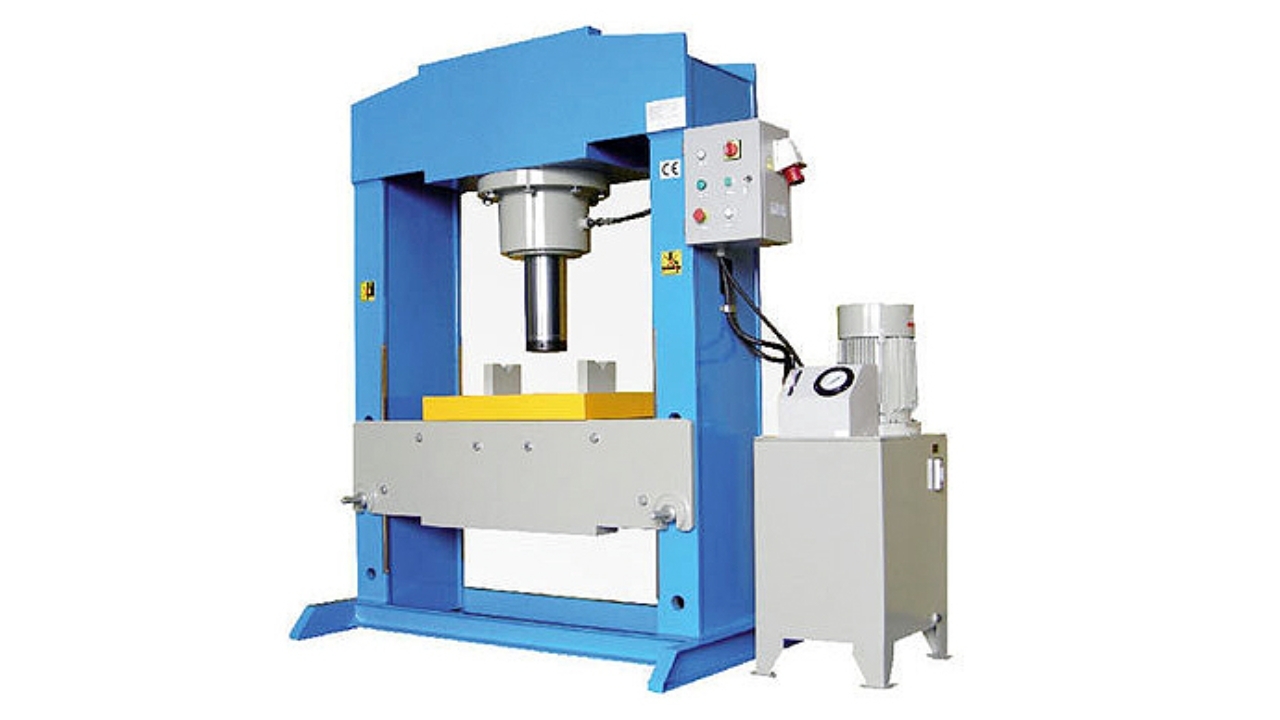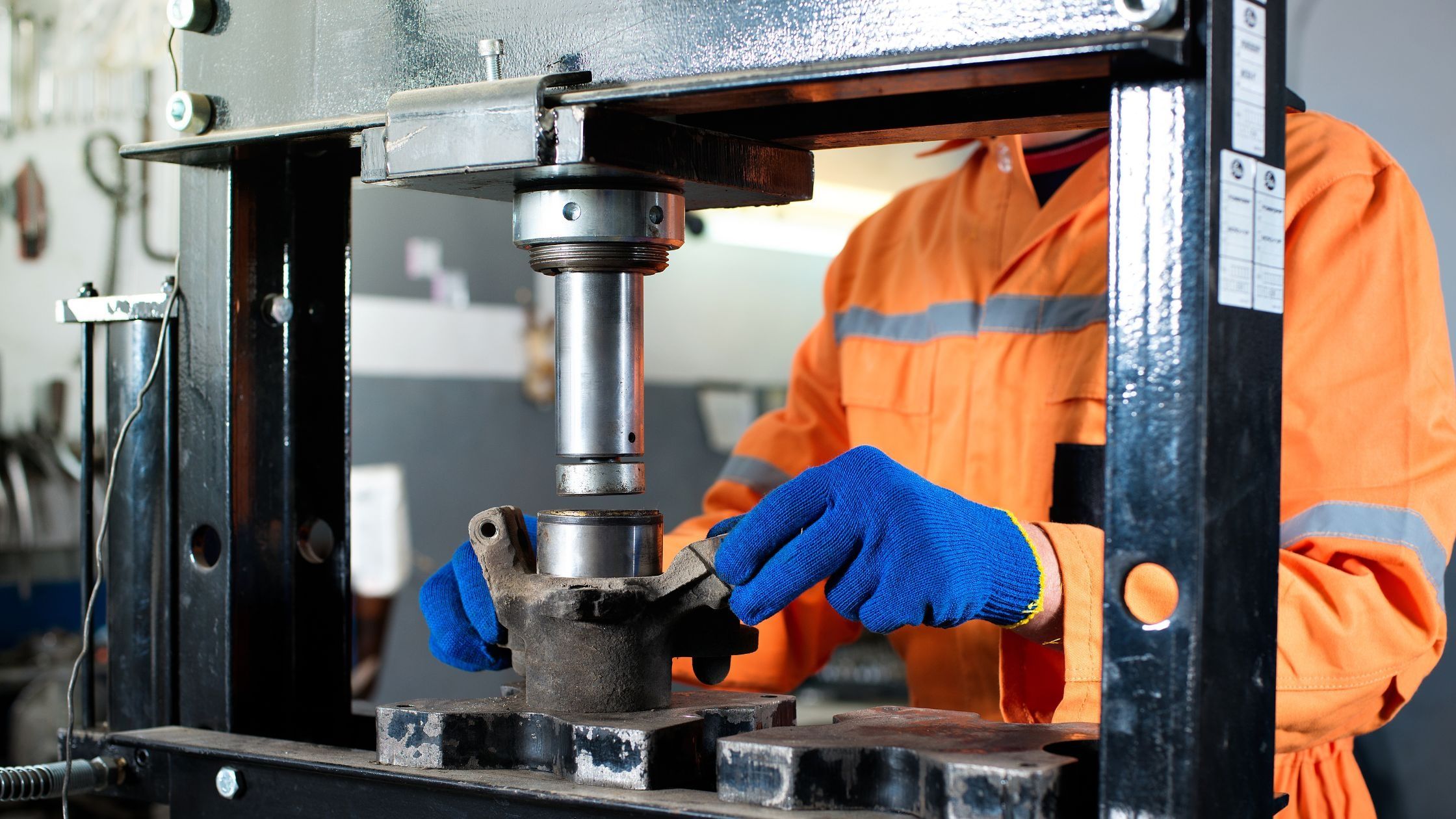A hydraulic press is a machine that uses Pascal's principle and incompressible fluid (usually oil) to generate and transmit large forces with a relatively small input force, allowing it to shape, assemble, or compress various materials.
Hydraulic press machines are among the most powerful tools in industrial manufacturing. They use hydraulic cylinders to generate immense force, making them essential for metal forming, molding, forging, and a wide variety of industrial applications. By applying Pascal’s law, hydraulic presses convert small amounts of input force into large amounts of output pressure, enabling tasks that would be impossible with mechanical force alone.

Importance of Hydraulic Press Machines in Industry
Hydraulic press machines are critical for industries like automotive, aerospace, construction, and manufacturing. Their importance lies in:
Delivering high precision and consistency in shaping metals and plastics.
Supporting mass production with uniform results.
Reducing manual effort and enhancing safety in heavy-duty operations.
Providing energy-efficient solutions compared to older mechanical methods.
Working Principle of Hydraulic Press Machines
The operation of hydraulic press machines is based on Pascal’s law, which states that pressure applied to a confined fluid is transmitted equally in all directions. A small piston applies force on hydraulic fluid, which transfers pressure to a larger piston, multiplying the force.
Key components include:
Hydraulic pump
Cylinders and pistons
Hydraulic fluid
Valves and hoses
Control system
This simple but powerful principle allows presses to handle tasks requiring thousands of tons of force.
Types of Hydraulic Press Machines
There are several types of hydraulic press machines, each designed for specific industrial tasks.
C-Frame Hydraulic Press – Compact design, ideal for smaller workshops.
H-Frame Hydraulic Press – Heavy-duty and versatile for large-scale operations.
Four-Column Press – High stability and balance for precision jobs.
Arbor Press – Smaller press for light work, such as bearings and small parts.
Transfer Press – Automates multi-stage operations for faster production.
Applications of Hydraulic Press Machines
Hydraulic presses are widely used across industries:
Automotive industry: Forging car parts, body panels, and engine components.
Construction: Shaping structural materials like beams and columns.
Electronics: Compacting electronic components and connectors.
Aerospace: Precision forming of lightweight but strong materials.
Plastic molding: Shaping plastic sheets and injection-molded items.
Advantages of Hydraulic Press Machines
High force output with minimal input.
Precise and consistent results in manufacturing.
Versatility across multiple industries and materials.
Lower noise levels compared to mechanical presses.
Energy efficiency due to optimized hydraulic systems.
Limitations of Hydraulic Press Machines
High initial investment cost.
Requires skilled operators to handle safely.
Regular maintenance of hydraulic fluid and seals.
Slower cycle time compared to mechanical alternatives in some cases.
Comparison: Hydraulic Press vs Mechanical Press
| Feature | Hydraulic Press | Mechanical Press |
|---|---|---|
| Force Output | Adjustable, constant throughout stroke | Fixed, peak at specific point |
| Precision | High | Moderate |
| Applications | Versatile – metal, plastic, composites | Primarily metal forming |
| Noise Level | Low | High |
| Maintenance | Fluid, seals, valves | Gears, lubrication |
| Cost | Higher upfront | Moderate upfront |
Checklist for Choosing the Right Hydraulic Press Machine
Determine the force capacity required (in tons).
Identify the materials to be shaped or molded.
Choose the type of press (C-frame, H-frame, etc.) based on space and needs.
Consider automation features for large-scale production.
Evaluate safety systems like overload protection.
Ensure after-sales support and spare part availability.
Trends in Hydraulic Press Machines (2025 and Beyond)
Smart monitoring systems with IoT sensors for predictive maintenance.
Energy-efficient hydraulic pumps reducing operational costs.
Hybrid hydraulic-electric presses for better speed and precision.
Automation integration for Industry 4.0 smart factories.
FAQs About Hydraulic Press Machines
Q1. What is the lifespan of a hydraulic press machine?
With proper maintenance, a hydraulic press machine can last 15–20 years.
Q2. How much force can a hydraulic press generate?
Depending on the model, hydraulic presses range from a few tons to several thousand tons of force.
Q3. Is hydraulic press maintenance expensive?
Maintenance costs are moderate, focusing on fluid replacement, seal checks, and valve cleaning.
Q4. Can hydraulic presses work with plastics as well as metals?
Yes, they are versatile and can shape metals, plastics, and composites.
Q5. What safety measures are needed while using hydraulic presses?
Operators should use protective gear, follow lockout procedures, and ensure machine safety systems are functional.
Conclusion: Why Hydraulic Press Machines Matter
Hydraulic press machines are the backbone of modern manufacturing. From shaping heavy automotive parts to producing delicate electronic components, their versatility, power, and precision make them indispensable. While they require higher investment and maintenance, the long-term efficiency and productivity gains make them a smart choice for industries looking to scale and compete globally.
